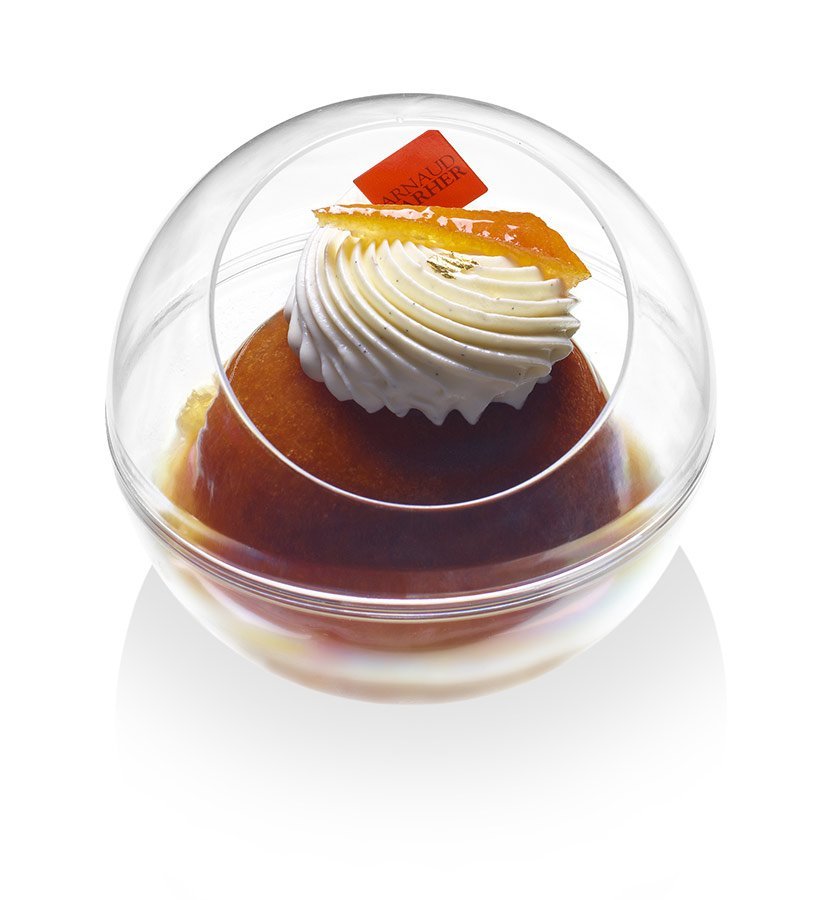ONCE UPON A TIME ...
All articles… rum baba was born
A king deposed from the Polish throne, Stanislas Leszczynski (1677-1766) was named Duke of Lorraine in 1737, after his daughter Marie Leszczynska married Louis XV, king of France. Stanislas Leszczynski spent most of his days leisurely relaxing at Lunéville Castle in France’s Meurthe-et-Moselle. A true food lover among food lovers (we owe him the first madeleines as well), he came up with the idea of dipping a piece of kouglof, which reminded him of Polish babka (a sort of raisin cake), in a sweet-wine syrup. According to certain historians, the duke named this new cake after his hero from Arabian Nights, Ali Baba. Others suggest that he borrowed the term from the Polish nickname for grandma, Babka, which can also mean old woman or a Polish sweet doughy cake.
It was Alsacien Nicolas Stohrer (1706-1789), who became Stanislas Leszczynski’s pastry chef as an apprentice, as well as Marie Leszczynska and King Louis XV in Versailles, who contributed to popularizing rum baba. From his small shop on 51, Rue Montorgueil in Paris (opened in 1730, Stohrer is one of the oldest pastry shops in France’s capital city), he perfected Ali Baba cake. Still sold in the three-century old boutique, the recipe is almost identical to the one the king’s pastry chef first made. The only difference being that rum is now used instead of Malaga wine.
Its cousin, savarin cake, first appeared in 1845. Inspired by the success of rum baba, the Jullien brothers, pastry chefs whose boutique was located near the stock market district (“La Bourse”) in Paris, created brillat-savarin cake (named in honor of the author of the “Physiology of Taste”). The dough is baked in the same way as rum baba (but without raisins), dipped in kirsch syrup, molded in the shape of a crown, and garnished with custard or whipped cream. The name has since been shortened to savarin cake.
At Relais & Desserts:
- Arnaud Larher likes to put an emphasis on the choice of rum. He pours rum made from freshly squeezed sugar cane and aged in oak barrels in Macouba, Martinique, on his babas. He also dips the dough in citrus juice. His frosting is made with vanilla and white chocolate.

Aurélien Trottier soaks his babas in aged rum, and places blood orange gelatin slices son top to add a fresh bittersweet citrus taste.
Jérôme Allamigeon, from Alexandres, makes classic babas (using syrup infused with citrus fruit zests) and a coffee version. He soaks the dough in coffee syrup and Baileys, covers it in milk-chocolate flavored whipped cream, and adds lines of Baileys dark chocolate sauce to accentuate the coffee aroma.
Caroline Mignot
BRIEFLY
Laurent Le Daniel has just been named a Chevalier dans l’Ordre National du Mérite. Congratulations to him for this prestigious award, which rewards a passionate pastry chef very invested in the sustainability of his profession.
Prepare Valentine’s Day! Take the time to discover the chocolate or fruity sweets offered by our chefs for sale online. By ordering this week you will be delivered on time.
The French team is selected for the Pastry World Cup! She won the European Cup ahead of Italy and the United Kingdom who are also selected for the grand final in January at Sirha.
JOBS
Pâtisserie
La maison Zanin recrute pour son laboratoire de Sallanches un Second pâtissier en CDI – 39h. Toutes les informations ici !
Pâtisserie
La maison Ducobu, en Belgique, recrute sur différents postes. Toutes les informations ici.





